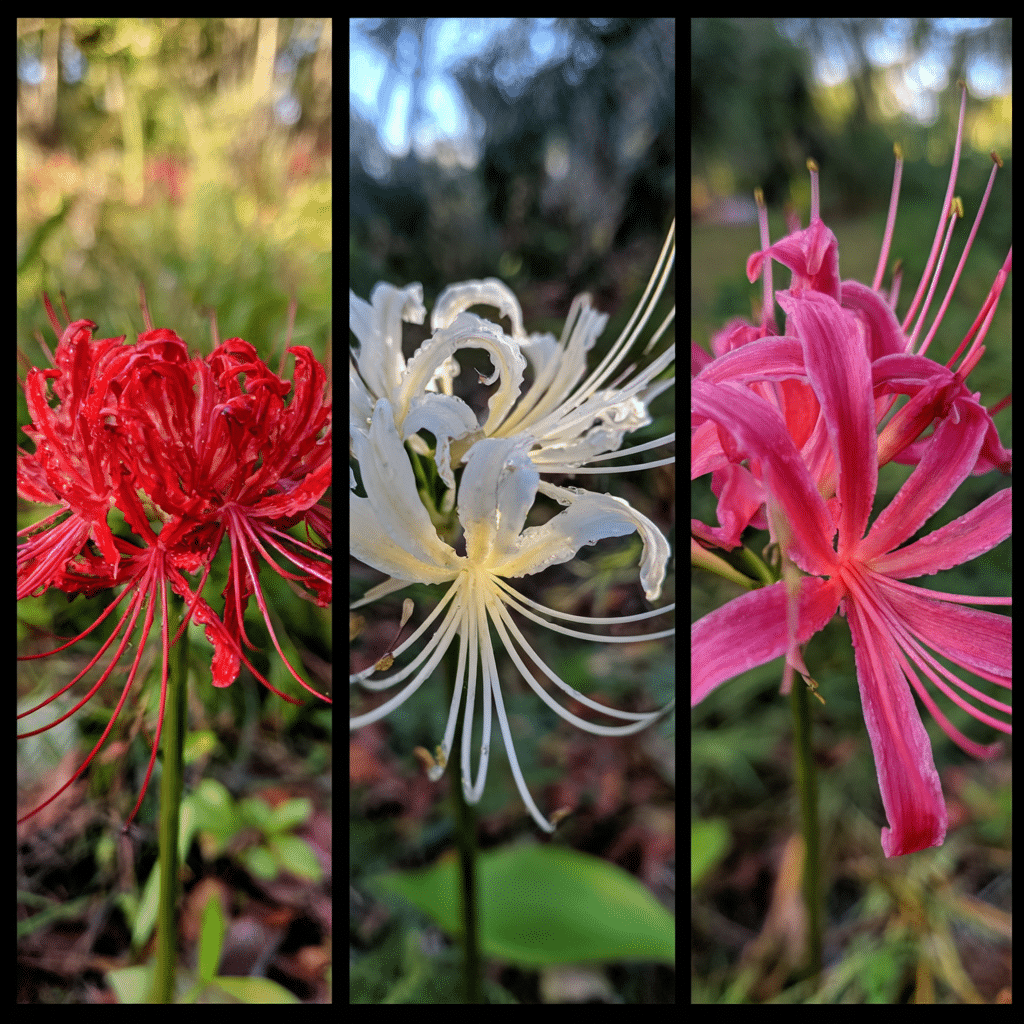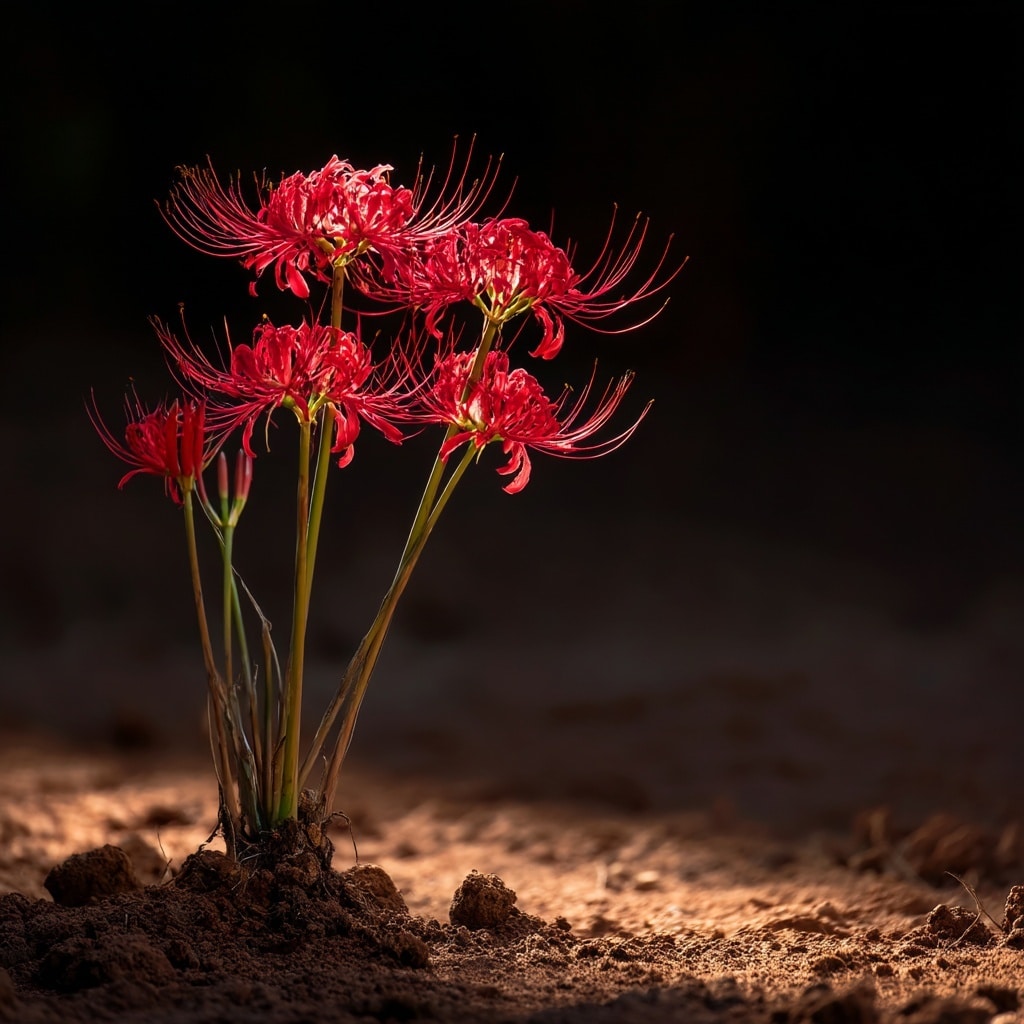Spider lilies are one of the most enchanting additions you can make to a late summer or early fall garden. These vibrant, whimsical blooms rise suddenly from bare ground on tall, leafless stalks, creating a dramatic display when most other flowers have faded. Known for their delicate, curling petals and long, spidery stamens, spider lilies bring unexpected beauty and charm just when your landscape needs it most. Whether you’re planting them for their nostalgic Southern appeal or simply to add a burst of color, learning how to grow spider lilies is a rewarding project for any gardener.
Table of Contents
Table of Contents
Botanical Information
- Botanical Name: Lycoris spp.
- Common Names: Spider lilies, hurricane lilies, surprise lilies, magic lilies
- Hardiness Zones: USDA Zones 7–11
- Bloom Time: Late summer to early fall
Spider lilies belong to the amaryllis family and are native to Asia, primarily China and Japan. Though their appearance is delicate, these perennials are surprisingly resilient. Their most defining characteristic is the way they bloom without foliage—leaves emerge in spring and die back in early summer, only for flower stalks to emerge dramatically later in the season.
Not to be confused with the spider flower (Cleome), which is an unrelated annual, spider lilies come in several cultivated species. Each offers a slightly different bloom color and growth habit, making them a versatile choice for many types of gardens.
Planting Spider Lilies
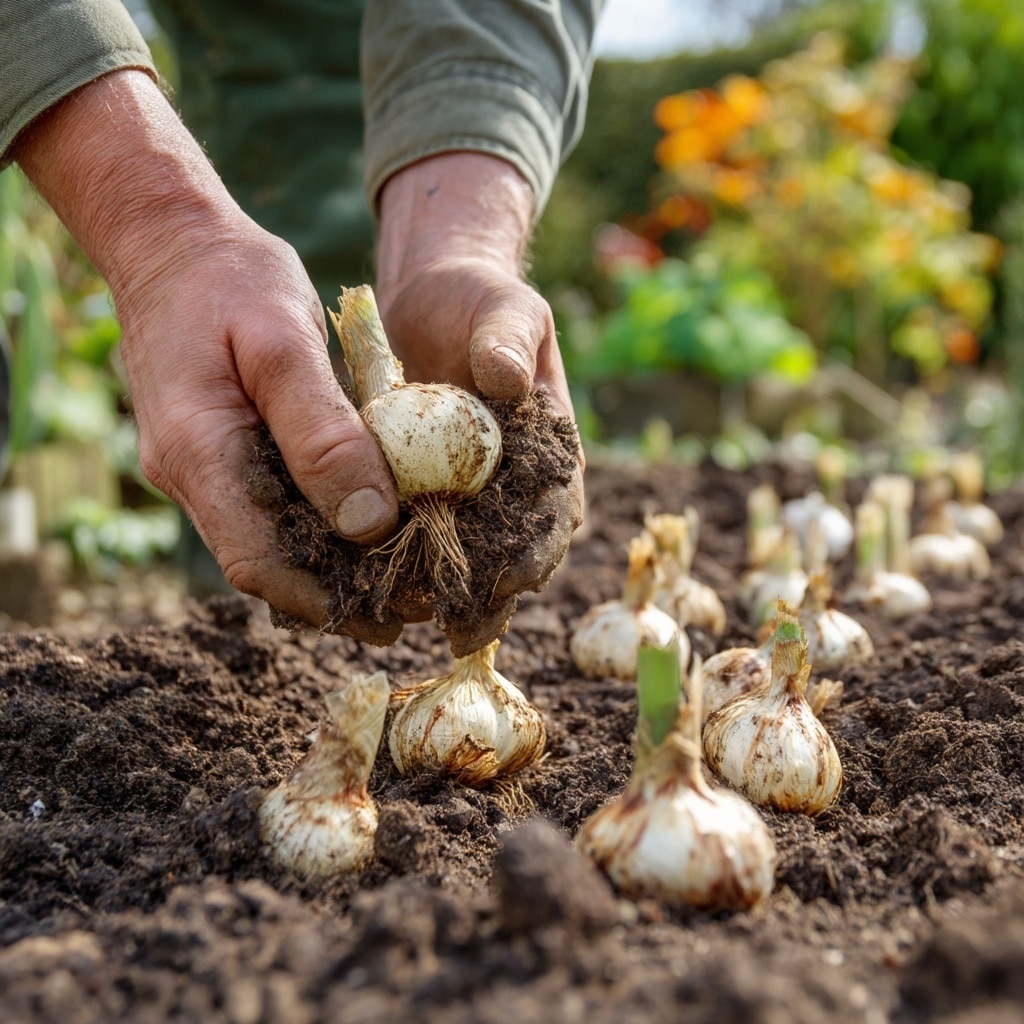
Planting spider lilies starts with healthy bulbs and the right timing. These bulbs are surprisingly low-maintenance and thrive with minimal attention once established.
When to Plant
The best time to plant spider lily bulbs is in fall or early spring. This gives the bulbs time to settle in before blooming season.
Choosing the Right Spot
Spider lilies perform best in full sun to partial shade. While they can handle a bit of shade, too much of it will reduce blooming. Choose a spot that receives at least 4–6 hours of sunlight daily.
Soil Requirements
These flowers prefer well-drained, slightly alkaline soil. Add compost to enrich the planting site, but make sure the soil doesn’t stay soggy between rains—good drainage is critical to prevent bulb rot.
How to Plant
- Dig a hole about 4–6 inches deep.
- Place bulbs pointed end up, making sure their necks sit just above soil level.
- Do not bury the top of the bulb—doing so may delay or prevent blooming.
- Space bulbs 12 inches apart to allow room for spreading.
Once planted, water the bulbs lightly and wait for signs of growth. You’ll likely see green foliage emerge in spring, even though blooms won’t appear until late summer.
Growing and Caring for Spider Lilies
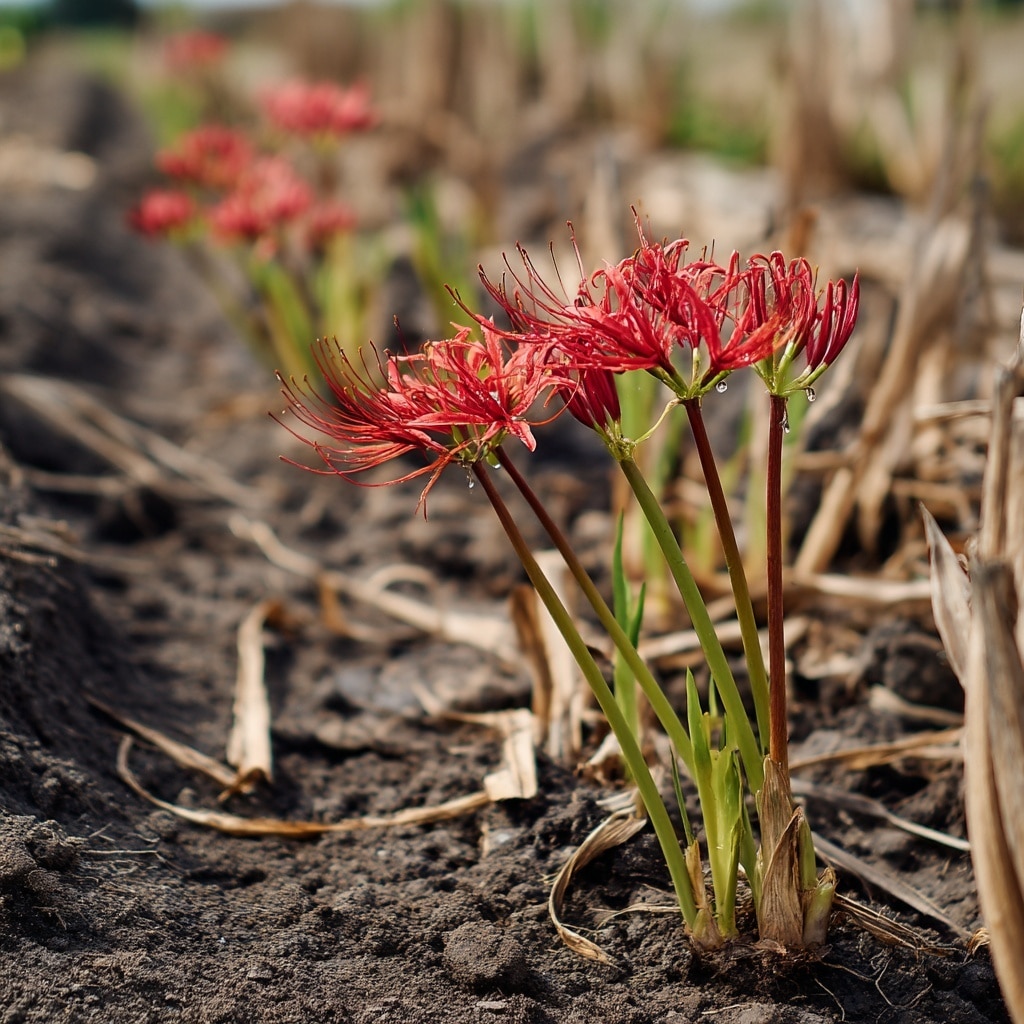
Once established, spider lilies are incredibly easy to care for. Their low-maintenance nature makes them ideal for both beginner and seasoned gardeners.
Watering and Seasonal Care
After planting, water the bulbs lightly and regularly until you see signs of growth. During the active growing season, moderate watering is best. The key is consistency—keep the soil moist but not soggy.
As summer approaches, you’ll notice the leaves beginning to wither. This is normal. At this point, stop watering and allow the soil to dry out. The foliage will yellow and die back completely, but don’t worry—this is part of the plant’s natural cycle.
Then, like clockwork, late summer rains will trigger a spectacular floral surprise. Spider lilies shoot up tall, bare stems topped with delicate blooms, often seemingly overnight.
Ongoing Maintenance
- Remove dead leaves once they’re fully withered and yellowed.
- Avoid disturbing the bulbs; they prefer to be left in place.
- Every 7 years or so, divide the bulbs if the clumps become overcrowded.
Wildlife and Resilience
Spider lilies are resistant to pests and diseases, and their bulbs are typically safe from deer. On the flip side, these blooms attract pollinators like butterflies, bees, and even hummingbirds—adding movement and life to your late-season garden.
Propagation
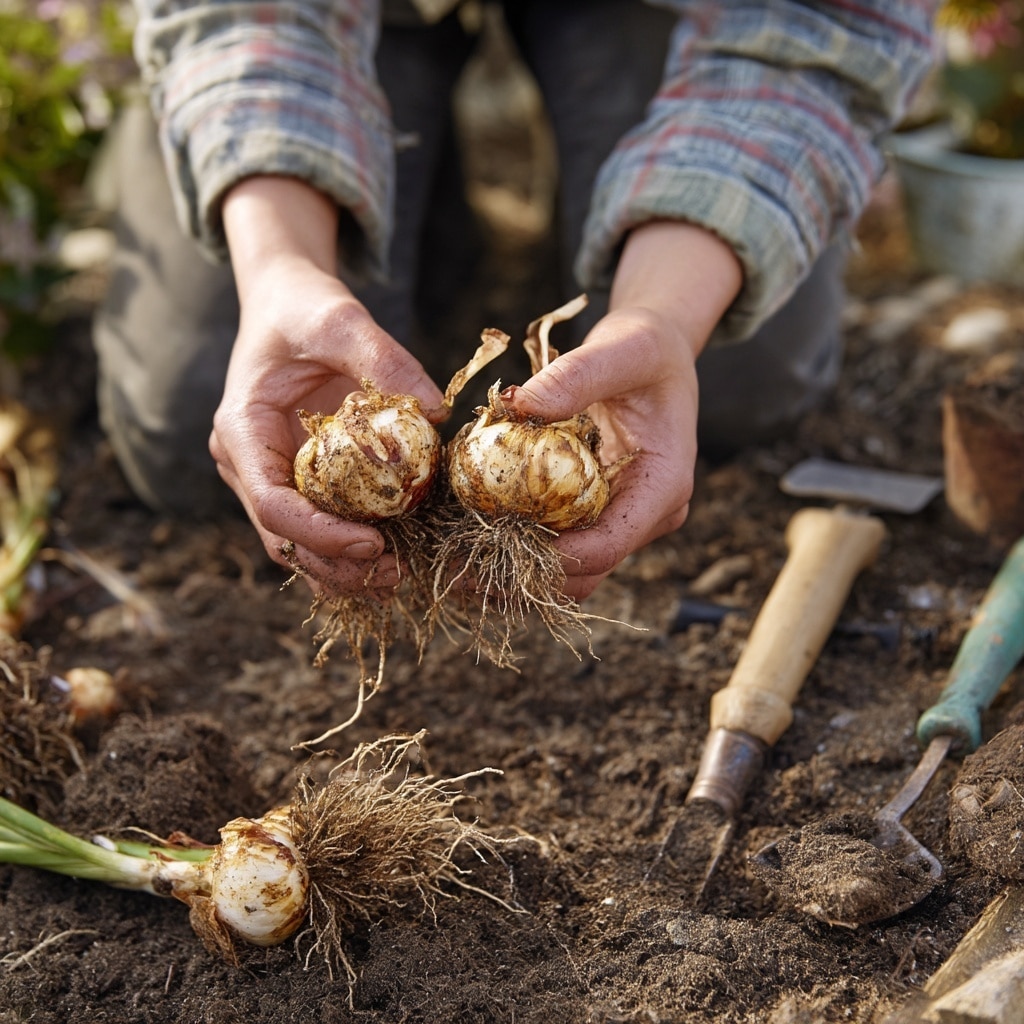
Spider lilies can be propagated by dividing their bulbs — a simple, rewarding way to expand your collection or share them with fellow gardeners.
How to Propagate
- Wait until after the blooms have faded and the stalks have dried out completely.
- Use a garden fork or spade to gently dig around the base of the plant.
- Lift the bulb clump carefully, then separate the offsets (smaller bulbs) from the main bulb.
- Replant these new bulbs in a prepared location, following the same spacing and depth guidelines used during initial planting.
Be Patient
It’s important to note that transplanted spider lilies may not bloom the first season after moving. These bulbs don’t like being disturbed, and often need a season or two to reestablish before flowering again.
Still, the wait is worth it. Once settled, each new bulb can provide years of reliable, magical blooms.
Pests and Problems
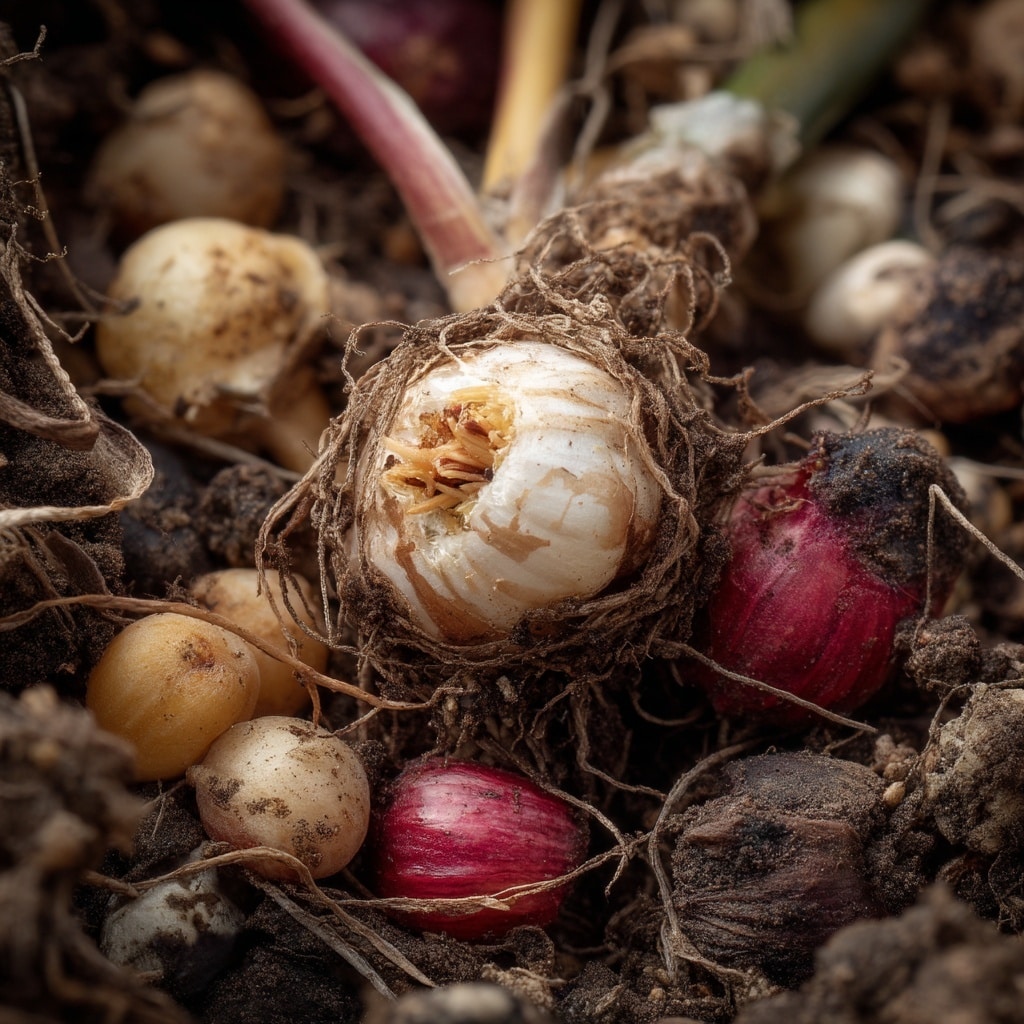
One of the best things about spider lilies is how tough they are. These perennials are naturally resistant to most pests and diseases, which makes them a great low-effort addition to the garden.
Common Issues to Watch For
- Root Rot: The biggest threat comes from excess moisture. Spider lily bulbs are prone to rot if planted in soil that stays too wet or poorly drained. To avoid this, always ensure proper drainage and avoid overwatering—especially during dormancy.
- Poor Blooming: If your spider lilies aren’t flowering, the issue may be too much shade. They bloom best with a few hours of sunlight each day. Bulbs that are buried too deeply may also fail to produce blooms.
By addressing these simple issues early on, your spider lilies will thrive for many seasons with minimal upkeep.
Recommended Varieties of Spider Lilies
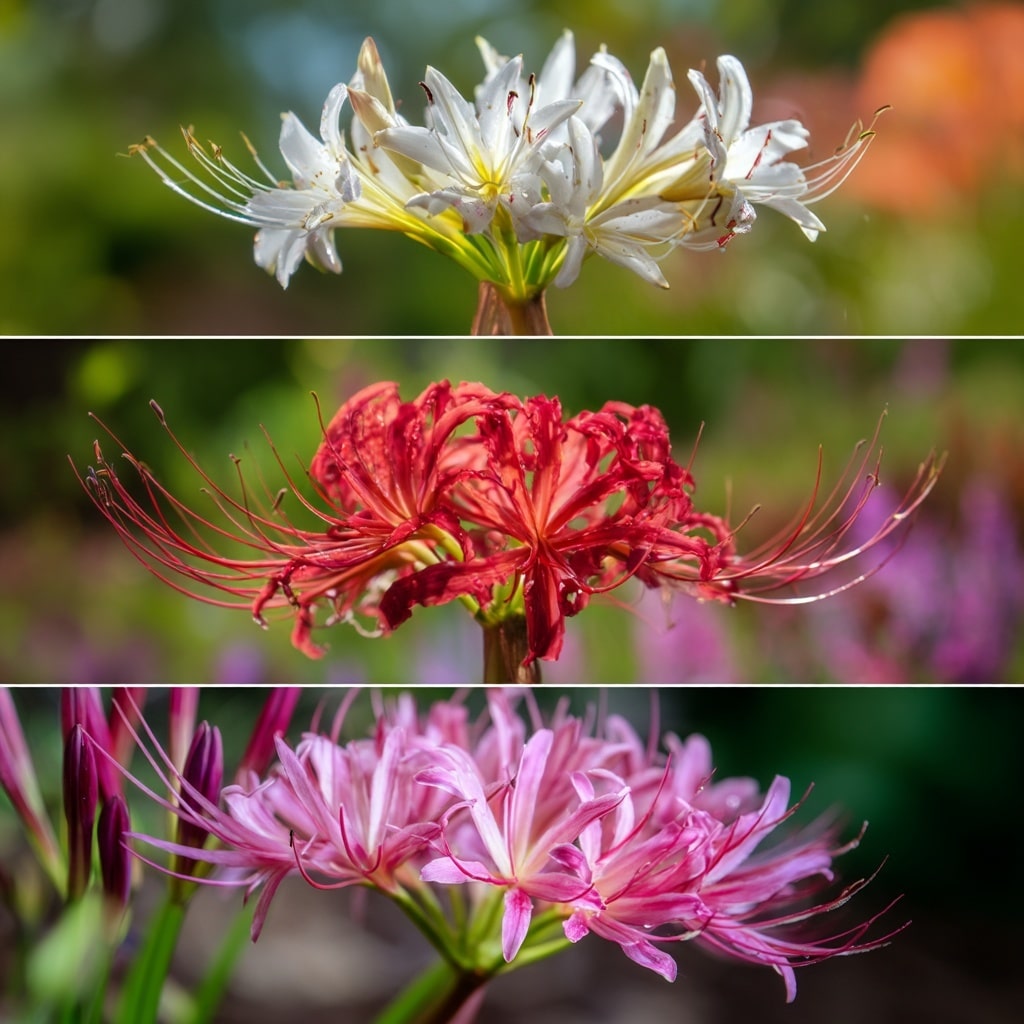
There are several beautiful types of spider lilies, each with its own charm. While all varieties share that dramatic “naked stalk” bloom effect, their colors, shapes, and preferred conditions can vary.
🌺 Red Spider Lily (Lycoris radiata)
The most iconic variety, red spider lilies boast coral-red, spidery flowers with long, curling stamens. They grow up to 24 inches tall and are especially popular in the Southern U.S., where they’re often called hurricane lilies due to their timing with tropical storms. These heirloom favorites prefer partial shade and mild winters.
🤍 White Spider Lily (Lycoris albiflora)
This elegant variety produces clusters of 6–8 white blooms, each with soft, pinkish stripes down the center. The long stamens create a delicate look, making this cultivar an excellent cut flower. White spider lilies grow best in light shade and offer a refined alternative to the more common red types.
💜 Naked Ladies (Lycoris squamigera)
Despite the cheeky name, Naked Ladies are all about subtle grace. These lilies send up strap-like foliage in early spring, which disappears before lilac-pink, trumpet-shaped flowers emerge on 18-inch stems in late summer. Ideal for zones 5–9, they’re more cold-tolerant than some other spider lily types.
Each of these varieties brings its own timing and color, making them perfect for staggered blooming or multi-season interest.
Garden Uses for Spider Lilies
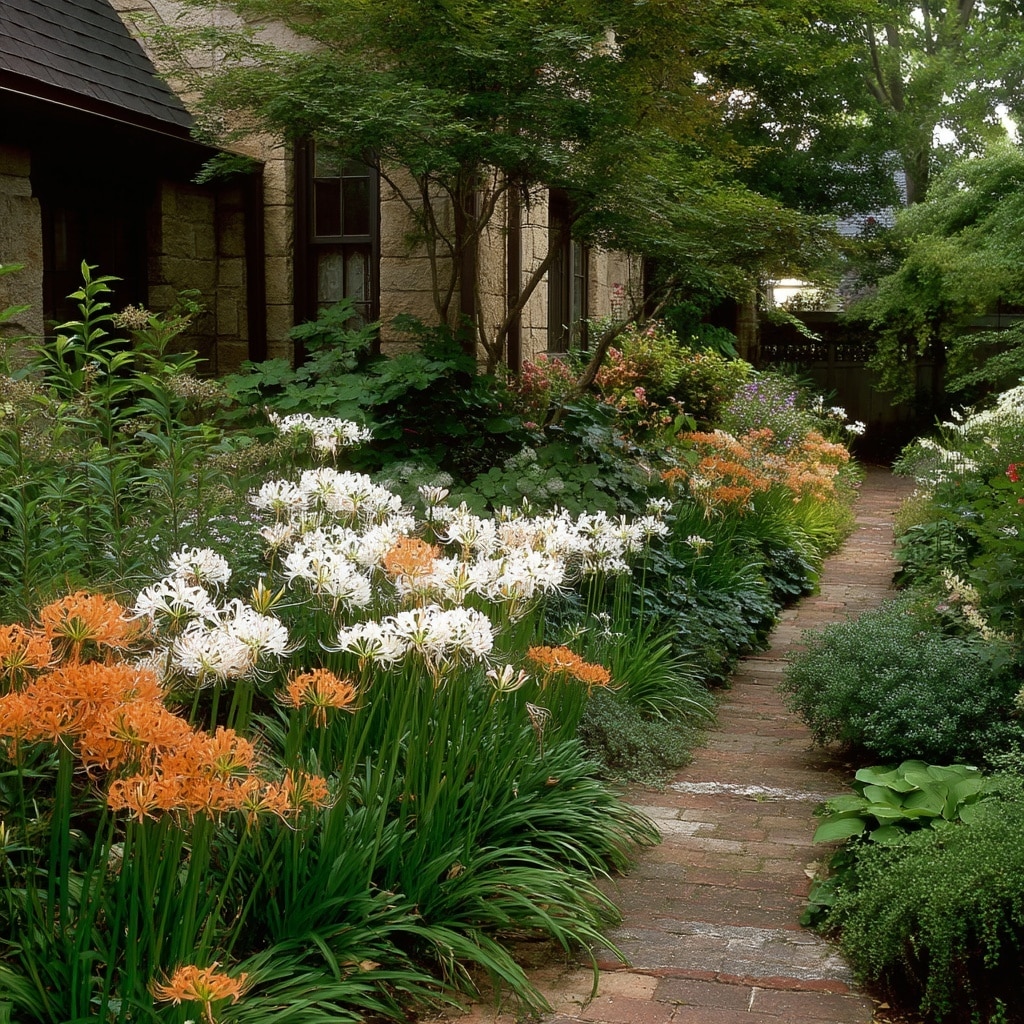
Spider lilies are more than just show-stopping blooms — they’re versatile plants that can be used creatively throughout your garden. Their surprise appearance and bold flowers make them perfect for both formal beds and naturalized spaces.
Where to Plant Them
- Mass Plantings: Spider lilies look most impressive when planted in large groups. Line walkways or garden edges for a dramatic late-season display.
- Shrub and Perennial Borders: Tuck bulbs between shrubs or perennial clumps for unexpected bursts of color just as other plants begin to fade.
- Woodland Edges: Use them to naturalize areas between sunny lawns and shadier woodland borders.
- Cutting Gardens: Their unique form and strong stems make spider lilies ideal for floral arrangements.
Companion Planting Ideas
- Plant among spring-flowering bulbs (like daffodils or tulips). These bloom and fade early, leaving the stage clear for spider lilies in late summer.
- Pair with foliage-rich plants like hostas or ferns to provide contrasting texture after the lilies bloom.
Container Gardening
If you live outside their typical hardiness zones, spider lilies can be grown in large containers. Choose pots with good drainage, and bring them indoors during winter in colder regions. In containers, they also serve as excellent thrillers in multi-plant arrangements.
No matter how you use them, spider lilies bring a touch of surprise, elegance, and late-season beauty to any landscape.
Conclusion
Spider lilies are a gardener’s secret weapon for late-summer color and low-effort charm. With their sudden, dramatic blooms and fuss-free care, these heirloom bulbs bring magic to any garden year after year. Whether you’re planting a few along a walkway or creating a mass of blooms near your border, spider lilies reward patience with unforgettable beauty.

